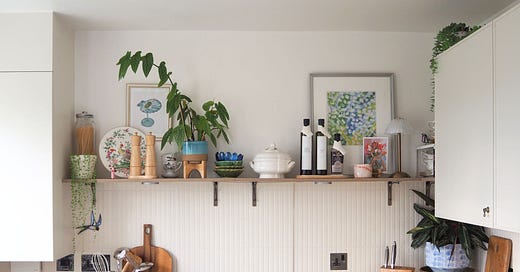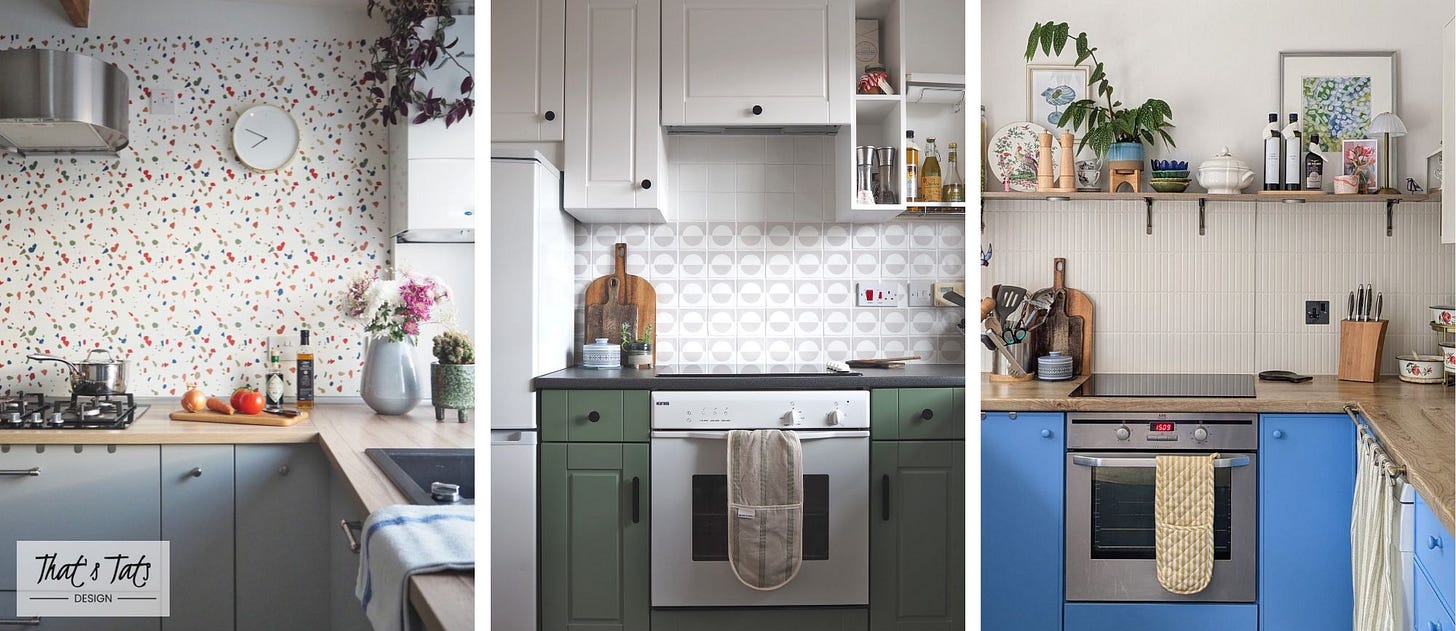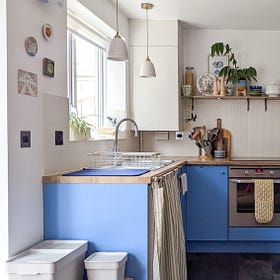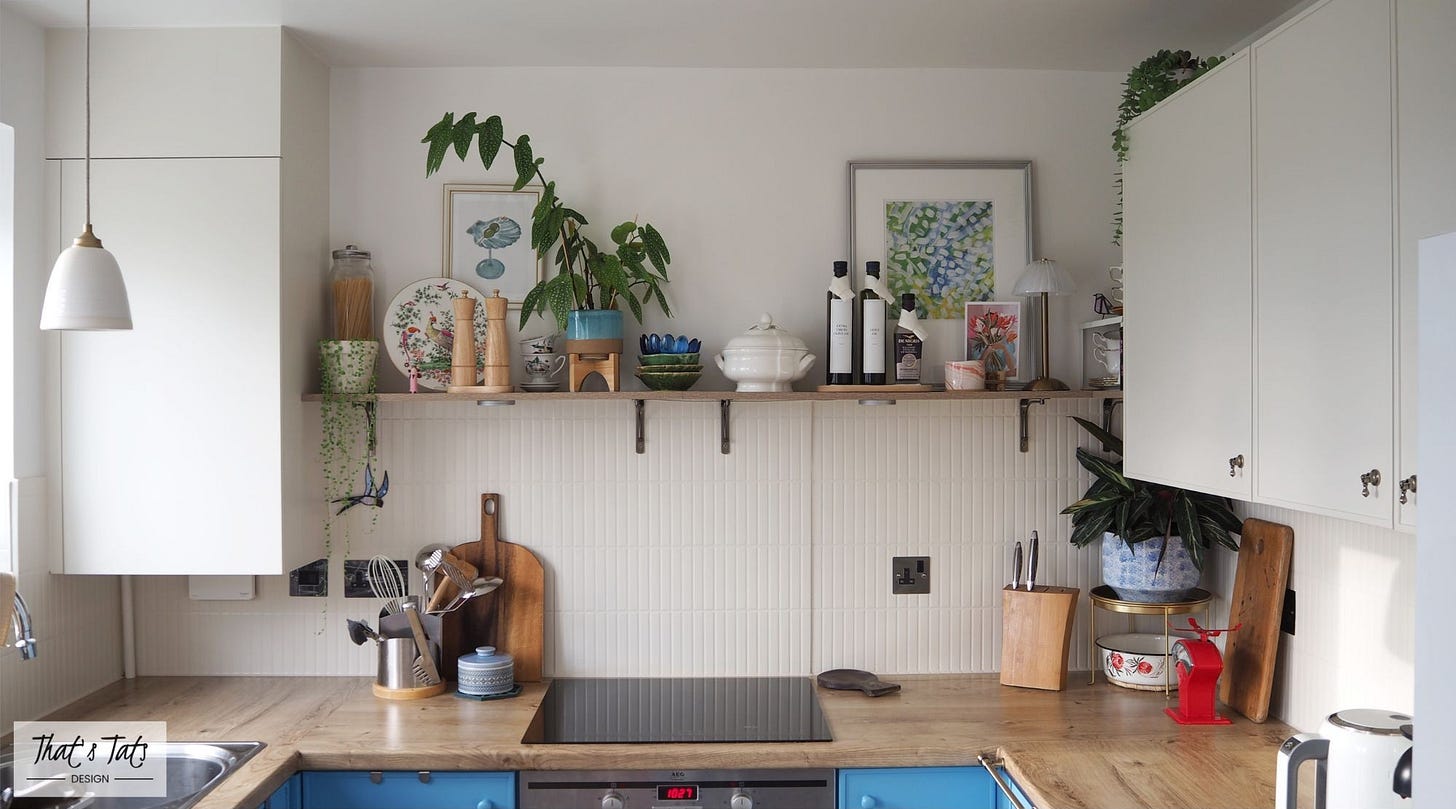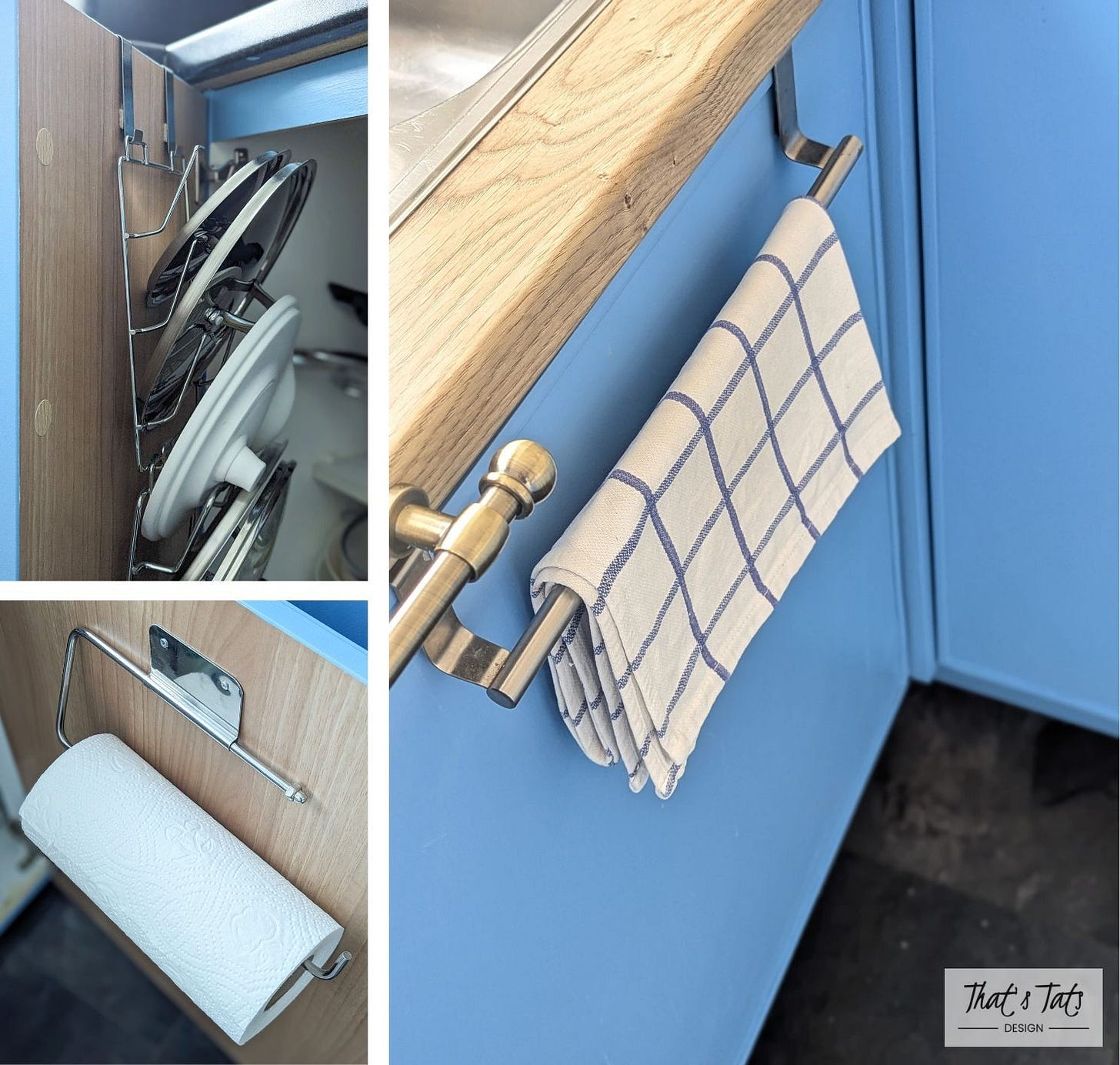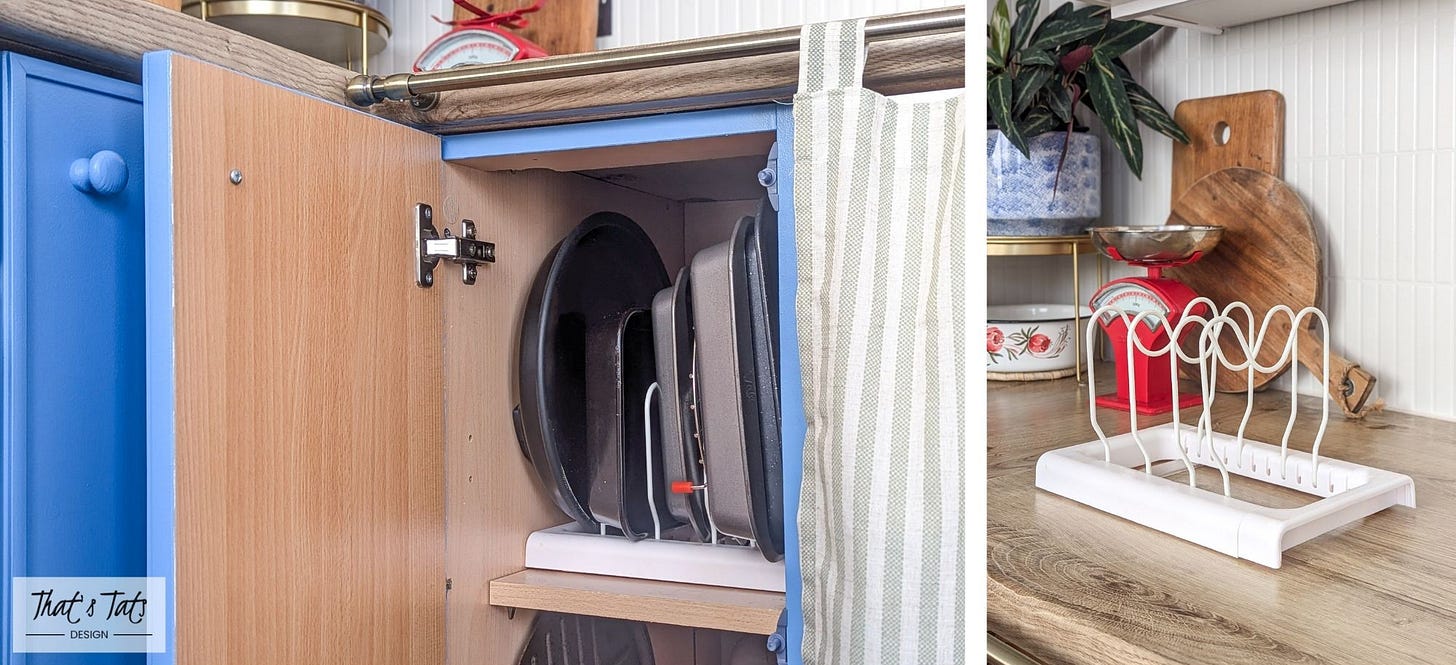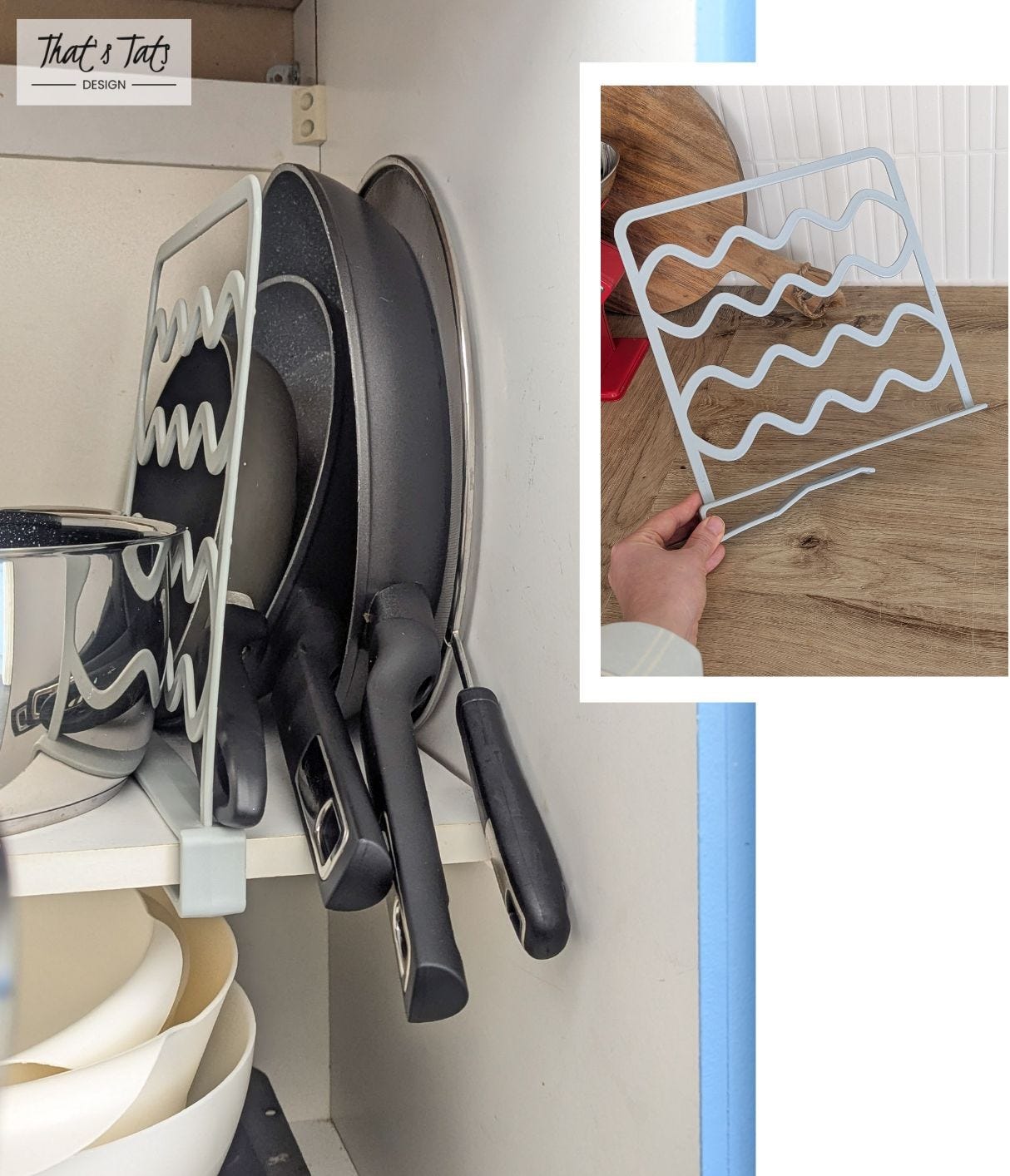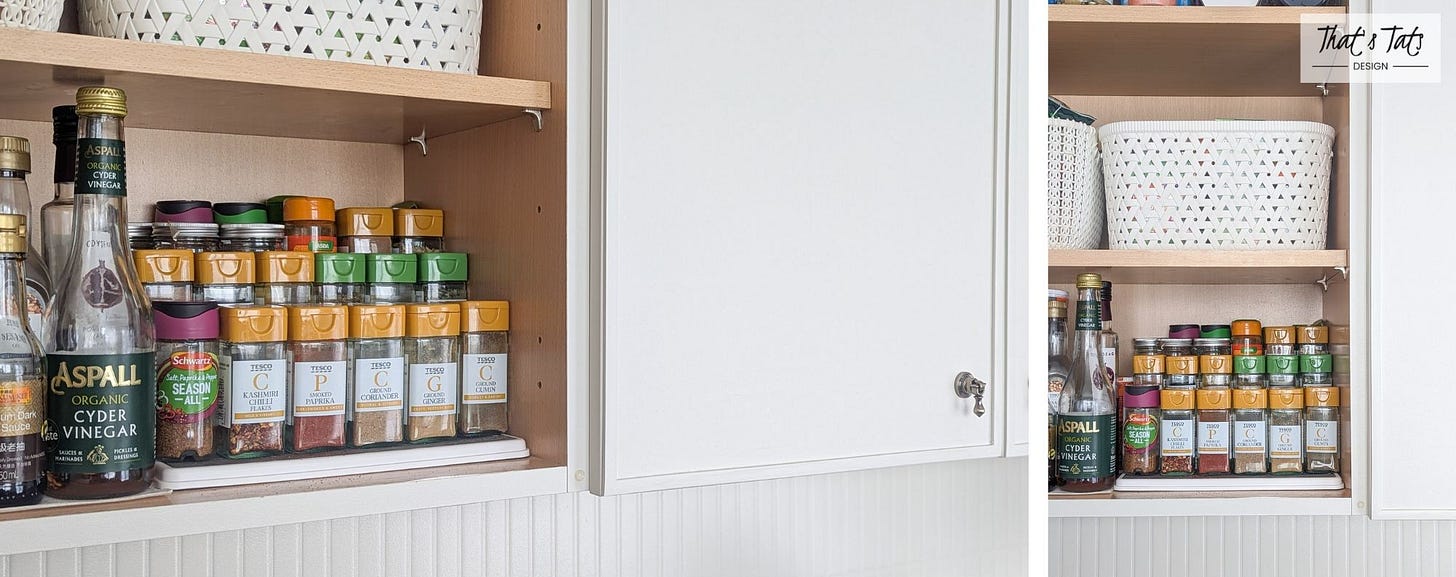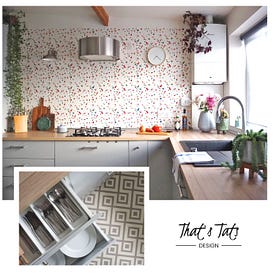If you’ve been here a while, you will know kitchens and bathrooms are my absolute favourite rooms to make over. They both provide a unique challenge when it comes to organisation and making a space work. In the average UK home these are usually relatively compact rooms, so they need to work extra hard. Quite often, kitchens especially are also inherited from the previous owners, and are either never changed or we decide to live with them, for multiple years in some cases, until we’re able to afford our dream kitchen makeover.
This is the route I decided to go down. I’d love to renovate the whole house in the years to come, so given the kitchen was overall in good condition, I decided to upcycle it for now, instead of ripping everything out. You can read all about it in the article below, should you have missed the big reveal last year.
Coastal Kitchen Makeover - The Reveal
Looking back at the homes I lived in, it somehow seems it has become tradition that I would makeover the kitchen in every single one of them. Okay, maybe not in some of the rentals, but in my London home the garage became a kitchen, and in Newcastle I transformed a standard
You will have noticed, this article mainly concentrates on the cosmetic makeover of the kitchen, such as the transformation of the cupboard fronts, splashback, worktops, and other visible design details. So, I thought it may be useful to also look at what’s behind the cupboard doors and highlight any of the functional changes I’ve made. After all, especially when inheriting a kitchen, next to how to improve the look, the other tricky part to work out is how to make the kitchen work for you. You’ve not planned the cupboard or appliance placement, so at first, it may not necessarily suit the way you cook or fit the kitchen contents you brought with you. So let me share how I make sure the kitchens I inherit work as perfectly for me as if I planned them myself.
One note before we start: If you’re after pretty styled pictures of my cupboard contents, I am sorry you will be disappointed. It’s all about the function here and what is going on behind those upcycled cupboard doors reflects that. Don’t get me wrong, I do love things to look pretty, but I stop at the inside of cupboards. These are supposed to be functional and tidy spaces, working really hard to make sure the space flows. I am afraid, you will not see me decanting muesli or grains into see-through containers and neatly arranging these on my shelves. Full disclosure, I do have one such pasta jar on show, but only because that one is practical. Generally though, I’d rather spend my time enjoying a cup of tea instead.
Boxes & baskets
My first absolute go-to in any kitchen, inherited or not, are boxes and baskets. Introducing these for organisation has been an absolute game changer. It’s not a revolutionary idea, but one that is underutilised I feel. I keep storage boxes in quite a lot of my cupboards to keep cleaning products handy, tupperware organised, or ingredients tidy. Where baskets and boxes make the biggest difference however is the corner cupboard. In any kitchen this is a very tricky space when it comes to making the most of it, while ensuring it’s easy to use.
Sometimes you’ll find a handy corner cupboard carousel installed, which can be useful, but in reality does not utilise all the available space and is expensive to purchase. So most of the time we find ourselves with an inherited corner cupboard that has shelves instead, and isn’t it just so frustrating when you’ve got to take out all the contents, one by one, to get to something at the very back, creating chaos on the kitchen floor or taking up useful counter space in the process. No need to mention that everything needs to be tidied away again. Usually, I would of course only store rarely used items at the back of the corner cupboard, but when you have a kitchen as small as mine, storage space will be limited. So the corner cupboard is essentially the biggest unit in my kitchen, and hence my most useful storage space.
I mainly store dry goods there, such as pasta, grains, breakfast cereal, snacks, etc. and since storing these in stackable boxes, I am now able to simply take out the box with the contents I need, or move not required boxes easily and neatly to one side to get to the ingredients stored deeper in the corner cupboard space.
Extra shelves or shelf position swap
As touched on already, when inheriting a kitchen, you would not have had the chance to plan the size of cupboards you need or their placement. Thus, the shelf space within cupboards may not be suitable for your needs. However, there is nothing stopping you from adding additional shelves to any of the cupboards or changing the position of the shelves around.
During the recent makeover, I reduced the amount of hanging storage in the current kitchen, which provided me with spare shelves I could add elsewhere. This was especially handy as the additional shelves match the rest of the kitchen interior. However, even if that option would not have presented itself, I would still have installed some additional MDF shelves and tried to match the interior colour as best as possible using vinyl wrap for instance. After all, the advantage of having the additional shelf space negates the need to move dishes out of the way daily to get to the ones you need, which at least for me outweighs the possible slight mismatch in looks.
Over door storage
Another really useful storage addition for any kitchen is over door organisers. Mine move with me from kitchen to kitchen, and I couldn’t be without them. I’ve got a lid organiser, a paper towel holder, as well as a towel rail. The former two are neatly hidden away inside the cupboards, where the latter is on show, and strategically placed under the sink, where the towel is never far away from where it’s needed, minimising the amount of possible drips across the kitchen floor.
The placement of over door organisers is something to consider carefully however. I find them most useful added to bottom cupboards, as contents are easy to reach. When added to the top cupboards, the additional weight of the contents stored needs to be considered of course.
Baking tray organisers
Stacking baking trays on top of each other is something we all do, I presume. But lifting trays you don’t need to get to the one you do, can be quite inconvenient, heavy, and loud at times. I realised that in my cupboard a full shelf will be taken up no matter the direction in which trays are stacked, horizontally or vertically, so I thought I’d try a vertical baking tray organiser in this kitchen. It did indeed hugely improve the convenience of accessing my baking trays on a daily basis.
The organiser I’ve chosen is a multi-use organiser, and next to baking trays, it can also store lids or any other items worth stacking vertically to make their access more convenient. It is extendable and the compartment width is adaptable. This is super handy and means I can make this organiser perfectly suit the available cupboard space as well as the size of my trays.
Shelf separators and inserts
Same as baking trays, we usually also instinctively stack pots and pans on top of each other when they are stored in cupboards. My problem with that however is that frying pans in particular do usually have a non-stick coating, which is easily damaged if pans are stacked on top of each other. I used to use some padding to help with this, but in this kitchen I wanted to try another option.
Given that I only have one shelf on which I can keep my pots and pans, I wanted to see if stacking them vertically, similar to the baking tray solution, would work. Of course, without some kind of organiser or separator, frying pans would simply not stay upright. So taking the idea of the vertical organiser, but considering the limited space, I purchased a simple shelf separator instead. It was originally advertised as a wardrobe organiser, but I thought, if this can help organise jumpers, it can surely also help separate pots from pans.
Stepped spice rack
Until I had a tiered spice rack, I didn’t really appreciate its usefulness. In previous kitchens, my spices were stored either in a really handy pull-out spice rack (I do miss my London kitchen), or simply in baskets for easy access. But in this kitchen, I wanted to avoid having to take out a basket on a daily basis and preferred to reach for the exact spice I needed instantly.
A stepped spice rack is perfect for that, I now appreciate, especially as you can actually see all your spices. You, of course, cannot read the label on the jars placed on any of the rows at the back, but if you consider the order of your spices and keep to your system, you will always reach for the right one.
That’s the few very simple additions I’ve introduced to my kitchen, which make the space much more enjoyable and convenient to use on a daily basis. If you ever try them out yourselves, I’d love to know. I also wonder, how do you organise your kitchen space to work for you? Let’s chat in the comments, or send me a private message, if you prefer.
Before I go, I’d love you to know that I absolutely love chatting to you. I read, respond to, and hugely appreciate every comment, like, and share/restack. Not only does your feedback on any of my articles make my day, it also helps me make future articles even more helpful, and as a bonus you make an enormous difference to the articles being read by as many people as possible. So I highly appreciate you being here and taking a brief moment to support my writing. Thank you!
You may also be interested in
Handy kitchen design tips less frequently talked about
Given I am knee-deep in making over my kitchen (catch-up with the progress here) and given that I am not yet able to share the final result, because as always things take far longer than anticipated and, as is typical for me, I am of course adding little design changes as I go, but I thought I’d still stay on topic for this month’s blog and provide you …
House to home without renovating
It is very rare that a new house, whether rented or owned, is feeling like your home when first moving in. There is a small chance that you may get lucky and find a home that already has your style, the wall colours are exactly what you like, the floors are what you would have chosen, and so on. I have not yet come across this home. But then it is also …
From Garage To Kitchen
Imagine this, a kitchen as small as a tiny cupboard. When standing in the middle, you are easily able to touch every wall around you. You need to be creative with how you use your millimetres of counter space. And if that’s not all, you have to interrupt your guests congregating in the dining area, every time you need to fetch some utensil overspilling …


